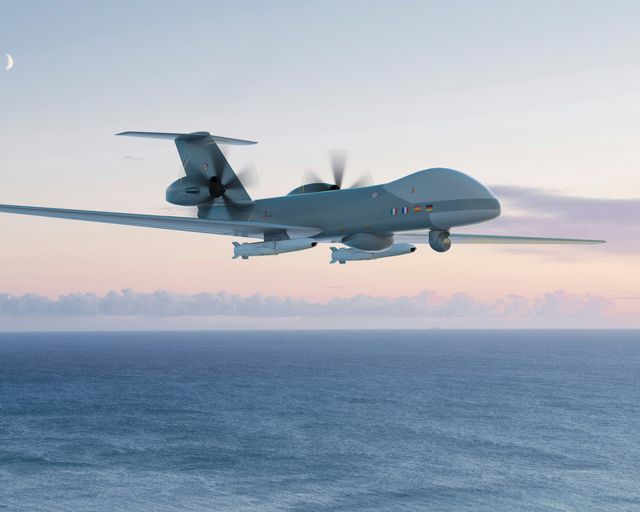SOURCE: IDRW.ORG


In a significant step toward bolstering India’s unmanned aerial vehicle (UAV) capabilities, a team from the Defence Research and Development Organisation (DRDO) recently visited a factory near Munich, Germany, to gain insights into the Eurodrone Medium Altitude Long Endurance (MALE) Remotely Piloted Aircraft System (RPAS). According to sources close to idrw.org, the DRDO delegation, representing India’s interests as an observer in the Eurodrone program, received a comprehensive briefing on the system’s advanced capabilities.
India, alongside Japan, was granted observer status on January 21, 2025, by the Organisation for Joint Armament Cooperation (OCCAR), marking a new chapter in India’s defence collaboration with Europe. With the Indian tri-services—Army, Navy, and Air Force—jointly requiring 97 MALE UAVs, the Eurodrone’s cutting-edge technology could shape India’s indigenous and procurement strategies, with its prototype first flight expected by mid-2027.
The DRDO team, led by experts from the Aeronautical Development Establishment (ADE), visited an Airbus facility near Munich, a hub for the Eurodrone’s development. The delegation was briefed on the platform’s technical specifications, operational capabilities, and design innovations, which left them impressed, according to Airbus officials cited by idrw.org.
The Eurodrone, developed by Airbus Defence and Space (Germany), Dassault Aviation (France), and Leonardo (Italy) for Germany, France, Italy, and Spain, is a twin-turboprop MALE UAV designed for Intelligence, Surveillance, Target Acquisition, and Reconnaissance (ISTAR) missions. Its open-architecture design, powered by two General Electric Catalyst engines, supports a 2,300kg payload, 40-hour endurance, and operations in non-segregated airspace, making it a versatile platform for modern warfare.
The Munich briefing highlighted the Eurodrone’s advanced sensor suite, including Synthetic Aperture Radar (SAR), electro-optical/infrared (EO/IR) systems, and tactical Signals Intelligence (SIGINT) payloads, as well as its ability to carry precision-guided munitions. The DRDO team was particularly impressed by the platform’s secure data handling, stealth features, and ability to operate in adverse weather, aligning with India’s requirements for high-altitude surveillance along the Line of Actual Control (LAC) and maritime reconnaissance in the Indo-Pacific. The visit, part of a June 2025 Programme Working Group meeting, allowed DRDO to assess technologies that could inform India’s indigenous UAV programs, such as the Rustom-II (Tapas-BH-201) and Archer-NG, or guide future procurement decisions.
India’s inclusion as an observer in the Eurodrone program, formalized on January 21, 2025, followed a formal request submitted on August 27, 2024, and was celebrated with a ceremony at the Indian Embassy in Berlin, where OCCAR Director Joachim Sucker presented a Letter of Approval to Ambassador Ajit Gupte. This status, shared with Japan (admitted in November 2023), grants India access to technical briefings, progress updates, and operational data without decision-making authority, allowing DRDO to study the Eurodrone’s design philosophies and integration strategies. The move aligns with a joint India-Germany statement from October 2024, emphasizing technology collaboration and co-production in defence platforms.
The Eurodrone program has faced delays since its inception in 2015, with the preliminary design review completed only in May 2024 due to coordination issues between Airbus and Dassault. The mid-2027 prototype flight remains tentative, and rising costs could impact India’s decision to procure or co-develop. Additionally, India’s observer status requires financial contributions for technical expertise, adding to the cost of its $1.5 billion military drone market in 2024, projected to reach $4.1 billion by 2030.
NOTE : Article cannot be reproduced without written permission of idrw.org in any form even for YouTube Videos to avoid Copy right strikes. Websites doing illegal reproductions will get DMCA and Legal Notices.